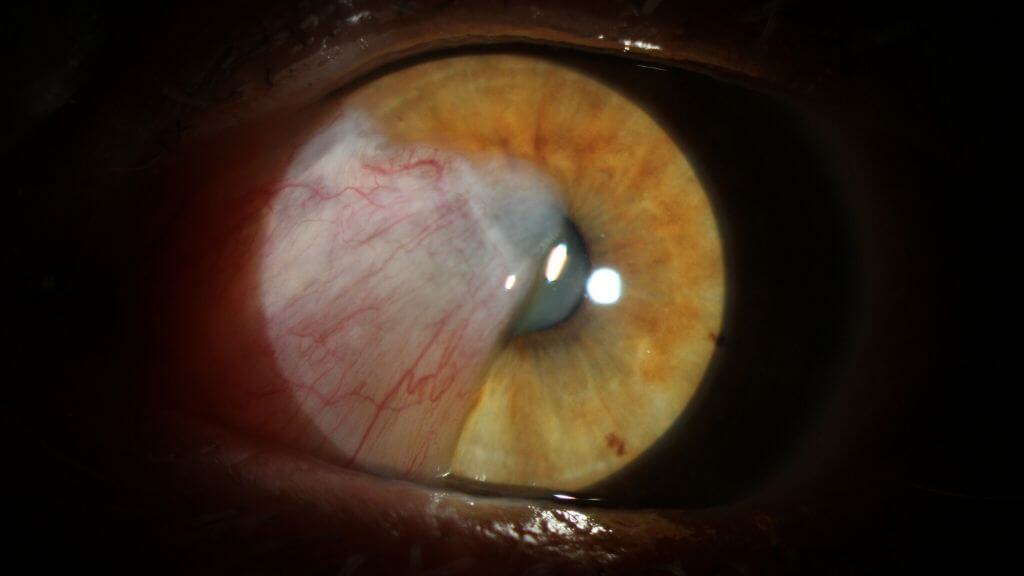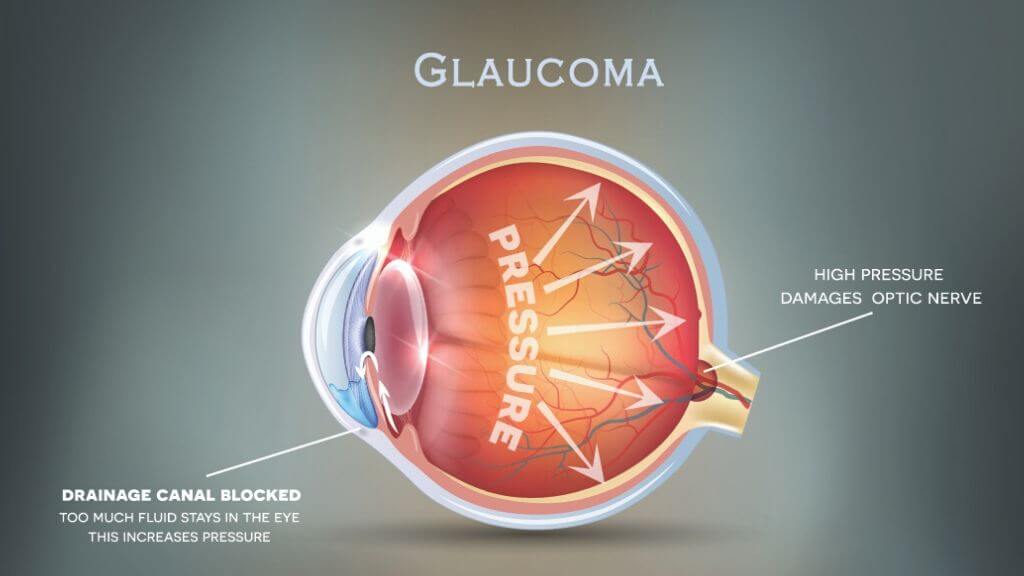The iris is the part of your eye that displays color, and the color is determined by genetics. It is also responsible for controlling the size of the pupil and the amount of light reaching the retina.
The iris typically darkens in color during the first years of life. It can also change naturally with age. Sometimes the iris changes color more significantly, and this needs to be addressed with your doctor.
The iris contains pigments that determine your eye color. Babies' eyes are usually born with light blue or gray eyes. The color gets darker with age. By the age of three, your eye color is permanent and usually will not change. Your genetics determines the color your eyes will turn during the first years of life. The amount of light the eyes are exposed to also influences this, but not as much as genetics.
Causes of Iris Color Change
Once your eye color is fully developed, it typically does not change. There are several factors that can temporarily alter the pigments in the iris. Although it may seem strange, these changes in iris color are not a cause for concern.
♦ Increased sunlight exposure: Sunlight exposure increases melanin production. Even if your eye color is already set, the additional light can cause your eye shade to appear darker. Also, sunlight is more powerful than artificial lighting. This can reveal colors in your eyes that you may not have previously noticed.
♦ Emotions: Your iris can change colors as your emotions change. Happiness, sadness, anger, and other emotions all alter hormones in the body. These alterations cause pupil size to change as well as iris color. Happiness and anger cause your eye color to become more vibrant, while sadness can make eye color brighter.
♦ Dilation of pupils: Your pupils change size all throughout the day as the light intensity around you changes. As your pupils dilate or shrink, the color of the iris around them can look different. Wide pupils cover more of the iris, so the color can look darker. Smaller pupils leave much of the iris uncovered, and the contrast of the black can make the color appear lighter.
Conditions Associated With Iris Color Change
There are several conditions that can cause significant changes in iris color. Some of these conditions require treatment to prevent serious damage to the eye.

Cataracts
A cataract is a clouding of the lens, which makes the pupil look grey. They are a common occurrence with aging and can significantly affect vision. The cloudiness of the lens can also change the color of the iris. Studies have also found that the darker your iris color is, the more at risk you are for cataracts.
Uveitis
Uveitis is inflammation of the middle layer of the eyeball. It is caused by infection, exposure to toxins, or trauma to the eye. The inflammation causes the covering of the eye (conjunctiva) to look red instead of white. The iris can also become stuck to the lens, causing it to change color.
Uveitis requires immediate medical attention. If you notice iris color change along with eye pain, light sensitivity, and blurred vision, reach out to your doctor right away.
Pigment Dispersion Syndrome
Also known as pigment loss, this condition causes the pigments to be lost from the surface of the iris. The pigments float around to other parts of the eye. These can collect and clog the eye’s drainage and increase eye pressure.
Pigment dispersion syndrome is a common cause of nearsightedness and can lead to pigmentary glaucoma. Iris color change is a common symptom of this condition and signifies that the individual needs to be monitored closely.
Pigmentary Glaucoma
A type of glaucoma called pigmentary glaucoma causes the iris color to change. The pigment at the back of the iris is disrupted, and the loose pigment granules collect at the back of the cornea.
Loose pigments can also collect at the front of the iris, changing eye color. Medications prescribed to treat glaucoma can also cause iris color changes. Without treatment, glaucoma can lead to blindness.

Horner’s syndrome
This condition involves a complication with the third cranial nerve, which can affect iris color. This can be caused by a lesion along the sympathetic pathways to the head and neck.
Stroke, spinal cord injury, or tumors damage nerve function to the head and neck. As a result, pupils can be different sizes, and iris color can change. Typically, the affected eye will be a lighter color.
Iris Color Change Treatment
Because most cases of changing iris color are natural and temporary, treatment is not applicable. When the cause is an underlying condition, then treatment will depend on the cause.
♦ Treatment for pigmentary glaucoma involves reducing eye pressure. Medications, laser therapy, and surgery can be used to achieve this. Treatment decreases the fluid in the eye, which reduces pressure.
♦ Treatment for uveitis involves medications to clear the infection and reduce inflammation.
♦ Treatment for cataracts involves surgery to replace the cloudy lens with a clear, artificial one.
♦ Treatment for Horner’s syndrome involves identifying the site of nerve damage. The syndrome itself does not have a cure, but once the underlying damage is repaired, iris color will be restored.
Natural Treatment for Iris Color Change
Supporting eye health and ensuring the eyes get the nutrients they need is the best way to prevent disease.
Infections, aging, and disorders can cause iris color to change. To reduce the risk of eye disease, and promote overall eye health, start adding natural ingredients to your health routine. The products below are proven to be the best in eye care.
♦ Astaxanthin: This is an antioxidant that is known to be more powerful than vitamin E. Vitamin E has been traditionally known to boost eye health, and this compound is even better. Protect your eyes from age-related deterioration and conditions like macular degeneration with regular astaxanthin.
♦ Lutein and zeaxanthin: These two compounds are often found together. Although separate carotenoids, lutein and zeaxanthin naturally accumulate around the retina in the eye. They provide antioxidant protection and prevent the development of cataracts and other iris color-changing conditions.
♦ Mixed carotenes: These are a powerful and natural way to boost eye health. The combined properties in alpha- and beta-carotene, as well as lycopene, protect your vision. These ingredients are known to reduce the risk of cataracts and glaucoma, both of which can change iris color. A high-quality supplement containing EVTene™ is the best way to get all the carotenes you need.
How to Prevent Iris Color Change
Preventing eye disease and promoting eye health is the best way to protect all parts of the eye, including the iris. The right diet and healthy lifestyle choices can protect your eyes and boost eye health.

There are numerous ways to minimize the risks of eye diseases that can cause iris color change or other problematic eye issues.
♦ Eating well: A balanced diet is essential for overall health, and this includes your eyes. Nutrients such as omega-3 fatty acids, lutein, zinc, and vitamins C and E are perfect for protection against eye diseases. Be sure to include fresh fish, leafy greens, fresh fruit, eggs, and nuts to keep your eyes healthy.
♦ Protect your eyes: The UV light from the sun is one of the most damaging for eyes. Too much direct exposure increases the risk of cataracts and macular degeneration. Invest in a pair of sunglasses that are polarized or have 99 to 100% UVA and UVB protection. Always wear them when you are outdoors.
♦ Rest your eyes: Blue light can penetrate through the eye directly to the retina. Retinal damage increases the risk of eye disease that can lead to blindness. Prevent damage by taking breaks from your computer and tablets. Ideally, you need to rest every twenty minutes and use an anti-glare screen where possible.
♦ Healthy living: Getting regular exercise prevents high blood pressure, which can increase the risk of eye diseases. It is also important to stop smoking as tobacco increases your risk for cataracts, optic nerve damage, and macular degeneration.
When to See Your Doctor
Iris color can change naturally with emotional changes, dietary changes, and exposure to the sun. These changes are mostly temporary and are not cause for concern. Often, it only appears that your eye color has changed, but it is more of an optical illusion.
If you notice more permanent and significant changes in iris color, then you should consult your doctor. Iris color change can be a symptom of an underlying condition that requires treatment.






